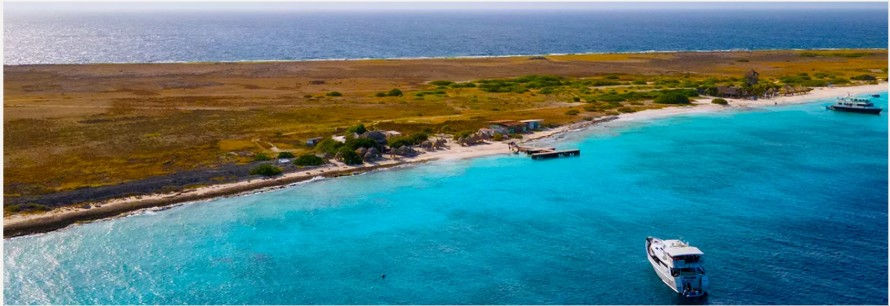Klein Curaçao’s new proposed conservation measures
- David Hecht
- Jun 10
- 3 min read
Just eight miles off the southeastern coast of Curaçao lies Klein Curaçao, a 1.7 square km uninhabited island revered for its powdery white sand beaches, turquoise waters and vibrant coral reefs. https://kleincuracao.cw A popular destination, the island draws roughly 500 snorkelers, divers and sun-seekers daily. Home to a restored lighthouse and the shipwreck of the Maria Bianca Guidesman, Klein also serves as a nesting ground for sea turtles and migratory birds. Despite its remoteness, Klein Curaçao has become a major draw for tourism, receiving nearly 200,000 visitors annually. It’s this popularity which has prompted renewed attention on its long-term sustainability.

In a major policy shift, the Ministry of Health, Environment and Nature (GMN) has submitted a comprehensive development plan for Klein Curaçao to the Council of Ministers, aimed at safeguarding this ecologically valuable region. The plan was developed in collaboration with the Waitt Institute and the CARMABI Foundation and aligns with Curaçao’s international commitments under the Ramsar Convention, which designated Klein Curaçao a Wetland of International Importance (Ramsar Site #2355) in 2018.
According to the government, unregulated tourism poses a threat to the island with hundreds of daily visitors arriving without permits or environmental supervision. The result - habitat degradation, damaged vegetation, illegal construction and boats damaging vulnerable coral reefs.
To address these concerns, the proposed plan outlines six strategic policy goals, focused primarily on the introduction of a permit system for all access to the island. Key proposed measures include:
A cap of 100,000 visitors per year, down from the current estimate of 200,000
A tourist environmental fee of $10–$15 per person
A ban on anchoring, except at designated mooring buoys
Mandatory use of composting toilets on all vessels or at landing points
Prohibition of activities such as shell collecting, feeding animals and drone usage
Restrictions on vehicles, including limits on the number and type allowed
In addition to access control, the plan calls for stricter enforcement and on-site supervision, as well as restoration efforts to rehabilitate sensitive habitats. A public education component has also been proposed, aiming to raise awareness among both tourists and locals about Klein’s ecological value. Ongoing scientific monitoring will help evaluate the success of the measures and guide future adaptations while proposed long-term structural funding to sustain conservation and management efforts will ensure this initiative isn’t soon forgotten.
While everyone can agree on the merits of the initiative, the process itself has drawn criticism from the island’s tour operators and even some environmental groups. The government appears to care not. The lack of consultation was deliberate as previous attempts to engage stakeholders led to interference and obfuscation.

Operators claim they have taken proactive steps for years, including forming the Klein Curaçao Conservation Foundation three years ago, conducting bird counts and helping to keep the island clean. Jan Geerings, owner of BlueFinn Charters, expressed concern over the proposed visitor cap. “We’re talking about the largest beach in Curaçao,” he said in a recent interview. “Even with 750 visitors a day, there’s still more than enough space for everyone.”
The final framework will now be developed by the Interministerial Working Group on Klein Curaçao, established by national decree in 2019.
While many agree that steps must be taken to protect the fragile island, the path forward is likely to involve a delicate balancing act between conservation and commercial access. For visitors, one thing is clear: a trip to Klein Curaçao may soon become more regulated and more expensive.





Comments